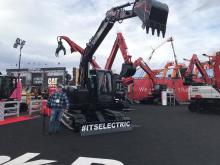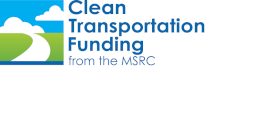
Dr. Bill Robertson brings both vehicle emissions technical and policy expertise to the MSRC. He first joined the MSRC as an alternate this summer and formally became the CARB (California Air Resources Board) representative on the Committee in September.
Bill has been with CARB since 2005 and is a Vehicle Program Specialist in the Mobile Source Control Division. He works on vehicle technology, alternative fuels, and after-treatment catalyst technologies and strategies to clean up emissions from trucks. He worked in CARB’s laboratory for more than a decade, and now serves in more of a policy role where he uses his technical knowledge to collaborate with CARB’s policy and incentive groups to ensure the agency is making data-driven policy.
He started out his collegiate career at Andrews University thinking he was going to be an automotive engineer but ended up getting a B.S. degree in chemistry. He took an nine-year higher education detour down the chemistry path studying the effects on air quality, earning his Ph.D. in Physical Chemistry from Yale and studying aerosol chemistry as a post doctorate at the University of California, Irvine.
Bill came full circle when he joined CARB, starting out in vehicle emissions testing, and has been working on emissions reductions ever since. “Since I have been with CARB, it’s amazing to see the progress we have made and the technology that has come to market, and to actually go from research projects to the default way business is done,” Bill said. “It’s just a riveting time to be involved in vehicle emissions and transportation. It’s been a transformative evolution that just seems to keep picking up pace.”
Part of Bill’s role at CARB is to work with other states that are looking to adopt California’s policies to help clean up the air in their regions. “This is a great area to work in. It has technical kinds of issues where we can figure out the different puzzle pieces, while helping to improve public health by saving people from asthma and cancer risks. So, it’s personally rewarding and good for society. Plus, the community that is working on these issues – whether it’s CARB or the MSRC or the air districts – are a well-meaning, collegial group of people to work with.”
He explained that public agencies have played an important role in pushing vehicle technology forward. “It’s definitely important to have clear lines drawn and an authority that recognizes that this technology is ready, so let’s deploy it now,” Bill remarked.
The work of the MSRC, CARB and similar agencies is critical to rolling out these technologies. “Let’s get the first one out there, let’s get the first dozen out there, let’s get the first hundred out there – there are these valleys that the technology must hurdle. There’s a balance or a collaboration between having a technical body that issues requirements as well as understanding what is ready to be pushed to that next level of development or implementation.”
Bill is looking forward to his work on the MSRC. “This is an interesting time to be on the MSRC. There’s been a shift in focus on fuels that’s been going on for some time prior to my arrival. First, there was an emphasis on adding technology to engines or exhaust after-treatment devices and now there is a whole suite of zero-emission tools available,” he remarked. “Striking the right balance between promoting the roll out of these vehicles and the supporting infrastructure is interesting to figure out as we try to be wise stewards of the public dollar entrusted to us. The MSRC has been there all along the way as these shifts are happening as we move into this zero-emission heavy-duty focus,” he commented.
He also noted that the MSRC can do things to reduce emissions not just from vehicles involved in transportation, but also polluting off-road equipment. “It will be interesting to see what opportunities are out there for a lot of the earth moving equipment and construction equipment to also be deployed in a zero-emission way.” (see photo)

Bill imagines that the MSRC will continue to focus on supporting the first generation of zero-emission trucks and infrastructure. “We want to continue to get the market going so it evolves into the second generation so this will probably be a near-term priority. But we can also be thinking about how we can creatively make sure there is a call for other vehicle technologies and the MSRC’s funding can help send that signal to frame the broader discussion.”
“One of the things that is so great about the MSRC is that everyone else comes from diverse backgrounds of local governments and transit agencies, so it has a broad democratic aspect to it where we can really connect across our communities,” he said. “It brings a different set of people together than me just talking through these issues with a group of engineers and air pollution specialists. I see the MSRC as a two-way street – it’s a way to get ideas out, but also a way to get perspectives in because this cross-section of members is so well-diversified.”
As to where the transportation future is headed in the South Coast, Bill says it’s going to be a process. “The transition may go faster than we expect, and yet there is such a large base of combustion-based vehicles, so it’s going to be a challenge. Even with the state’s Advanced Clean Trucks and Advanced Clean Fleets regulations, there are still one third of the trucks out there that aren’t under the purview of the rule so there is still a big hurdle to getting these vehicles turned over. However, they are projecting cost parity for passenger vehicles and trucks in the next five to fifteen years and with the benefits that zero-emission vehicles bring, it is going to move pretty quickly.”
